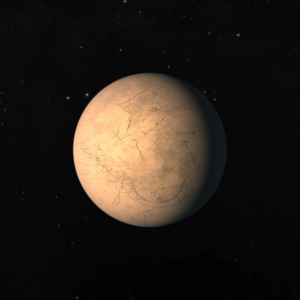Ever since NASA announced that the TRAPPIST-1 system had seven planets instead of the original three, scientists have been interested in learning more about the bizarre system. Now after much research and some suspected details, scientists have found orbital details about the systems farthest planet, TRAPPIST-1h.
Using data from the Kepler spacecraft, scientists studying the exoplanets have confirmed that the outermost planet, about six million miles from the TRAPPIST-1, has a 19-day orbit around its host star.
Studying data from the Spitzer Space Telescope, the team noticed a predictable pattern, also called an orbital resonance, among the first six planets in the system. An orbital resonance is when orbiting bodies show a consistent gravitational influence on each other, like how Jupiter’s moon Europa orbits twice in the same length of time Ganymede takes to complete four orbits.
The team then used the Spitzer data to calculate six potential resonant periods. After gathering more data, only one of those potential periods remained.
“All of this indicates that these orbital relationships were forged early in the life of the TRAPPIST-1 system, during the planet formation process,” Rodrigo Luger, a doctoral student at UW in Seattle and lead author of the study, said in a press release. “The resonant structure is no coincidence, and points to an interesting dynamical history in which the planets likely migrated inward in lock-step. This makes the system a great laboratory for planet formation and migration theories.”
NASA has had its eye on the seven-planet system, which orbits the ultracool dwarf star TRAPPIST-1, since December 2016. The system is somewhere between 3 and 8 billion years old. It was originally thought to only have three planets until Spitzer data revealed four additional planets.
NASA’s Hubble Space Telescope is now looking for more information about the planets’ atmospheres; when the James Webb Space Telescope launches in October 2018, it will join the search for information about TRAPPIST-1.










